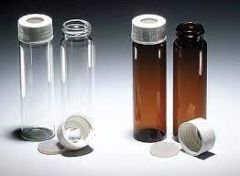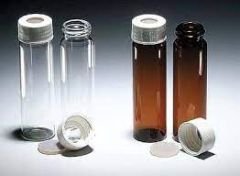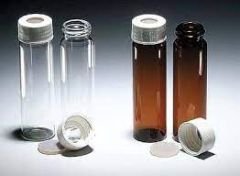Know All About Vials Types and Their Applications

A vial is a container made from either plastic or glass, primarily used for medical purposes or storage. Vials have a tube-like shape with a flat bottom, which distinguishes them from other blood collection containers. Moreover, various types of vials are available in the market, each designed to meet specific needs.
Although vials are mainly utilized in laboratories for storing medicines or samples, they are also used by law enforcement agencies. Given the wide range of vials available, selecting the appropriate one is essential. All vials are designed to securely store samples, preventing leaks or contamination. However, the quality of the vial is what sets it apart. Understanding the different types and their uses will help you choose the right vial for your business. Let's explore the options.
General-Purpose Vials
As the name suggests, general-purpose vials are versatile containers. They are not only used to store or collect samples but also to transport a wide variety of substances. These vials can hold anything from essential oils to evidence from crime scenes. They are made from either glass or plastic and come in amber, white, or clear options.
To select the appropriate vial, it is important to know the purpose and the type of sample it will hold. These vials are available in different capacities, materials, and sizes, providing you with numerous options.
Amber Glass Vials
Clear screw thread glass vials and other types are widely used in pharmaceuticals, cosmetics, and other industries. Cobalt blue vials are an alternative to amber glass vials, offering customers another option for storing light-sensitive materials. Some suppliers may also offer custom vials based on special requests.
Scintillation Vials
Scintillation vials play a crucial role in measuring the radioactive activity of a substance. Radioactive samples are placed in these vials (made of either glass or plastic) and then loaded into a liquid scintillation counter. Due to the radioactive nature of the samples, it's essential to verify the quality of the vials. Be sure to check the vial material before purchasing.
Cryogenic Vials
Some samples need to be stored at extremely low temperatures, as low as minus 196 degrees Celsius. These vials are made from materials that can withstand such freezing conditions and are typically used to store samples that require cold temperatures. Choosing the right vial material is crucial to protecting your samples.
These vials are generally made of specially configured polypropylene; glass is not suitable for storing these materials. It is also advisable to use silicone O-rings with caps to prevent contamination and ensure a tight seal on the vial.
VOA Vials
VOA vials are primarily used for the analysis of volatile organic compounds. They are made from clear and amber borosilicate glass and come with polypropylene caps in various sizes. If you need an EPA VOA vials supplier, you can reach out to Clinivex. They are a leading supplier of medical equipment, including various types of laboratory instruments.
Autosampler Vials
Autosampler vials are designed to automatically load samples for analysis. If you have a larger budget, these vials can save you both time and manual effort without compromising the accuracy of sample loading. However, it's important to consider the type of autosampler machine before selecting an autosampler vial, as not all vials are compatible. Incorrect use of the vial could result in sample degradation and may even damage the autosampler.
Conclusion
Now that you have a better understanding of the types of vials available, you can make an informed decision based on your specific needs. Each vial has its own unique application, so it's important to choose the one that best suits your requirements. For assistance in selecting the right vial, you can contact a trusted EPA VOA vials supplier like Clinivex. They can guide you in making the right purchase for your business needs.
 info@theclinivex.com
info@theclinivex.com  +1 (877)-861-1996
+1 (877)-861-1996 






